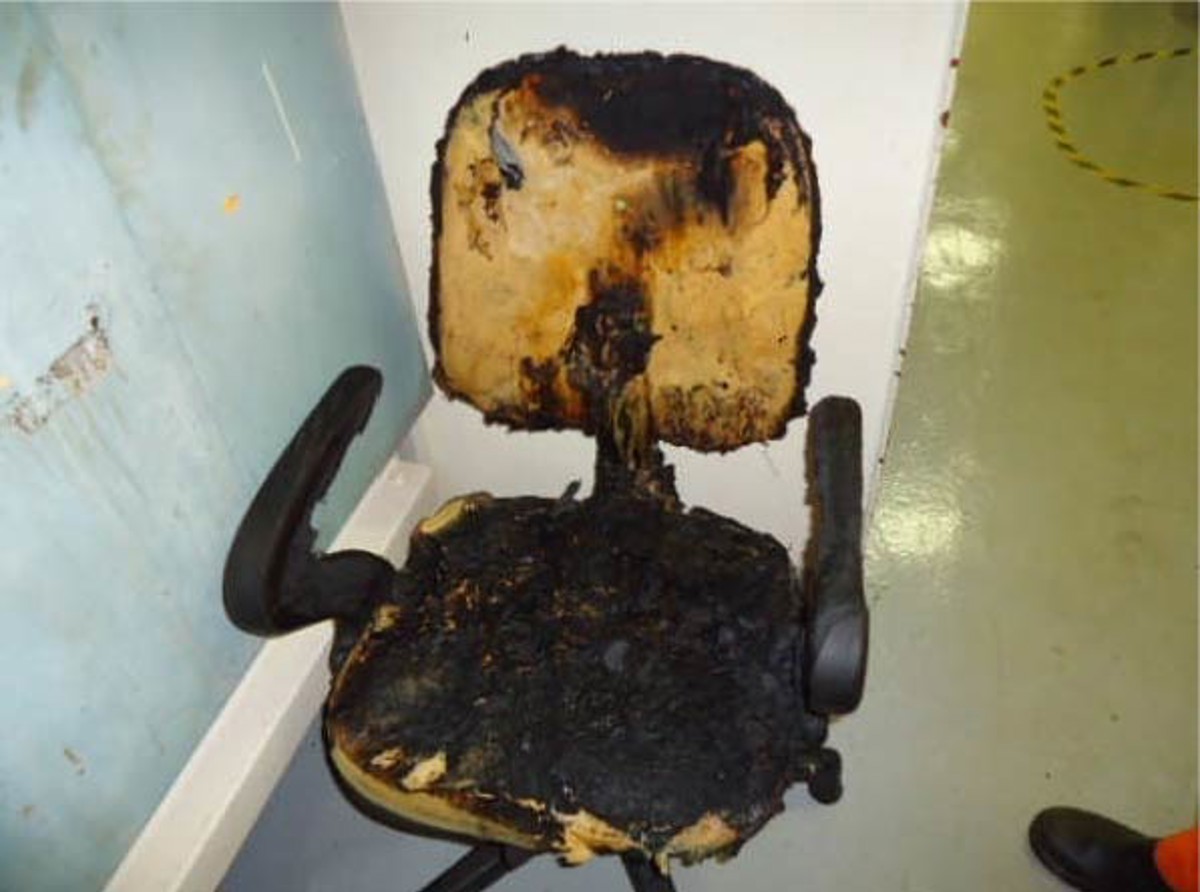Fire caused by hot work
- Safety Flash
- Published on 21 May 2013
- Generated on 22 December 2025
- IMCA SF 08/13
- 2 minute read
Jump to:
A Member has reported an incident in which a small fire was caused by hot work taking place on the deck above.
What happened?
The incident occurred when a repair was being performed by a sub-contractor on a steel plate in the forecastle area. The job involved using an oxy-acetylene torch to remove an old corroded plate.
During this activity, the oxy-acetylene cutting of the plate caused heat transfer from the forecastle deck area to the store-man’s office area (located directly below the place where the hot work was being carried out). As a result, glowing slag fell on the store-man’s chair, which caught fire.
There was no-one in the storeman’s office at the time. The fire detection equipment in the office caused the alarm to go off. There were no injuries.

fire-damaged chair after the event
Our Member’s investigation revealed that:
- Immediate causes:
- Fire watch location was not well planned by supervision.
- Melt slag fell on top of the store-man’s chair.
- Fire watch location was not well planned by supervision.
- Root Causes:
- Failure to control and conduct safe work (permit to work planning failed).
- Failed check of the workplace.
- Inadequate risk assessment (warning about the smell of smoke in the storeman’s office was not investigated by the fire watcher).
- Failure to control and conduct safe work (permit to work planning failed).
Actions
Our member took the following preventative and corrective measures:
- Held discussion with all parties involved to ensure all understand their responsibilities.
- Ensured that any spaces identified as at risk of heat transfer from hot work are identified in the appropriate section of the job risk analysis beforehand.
- Raised awareness of correct identification of adjoining compartments/spaces in regard to hot work and heat transfer through bulkheads, decks, etc.
Recommendations
- Double check (second pair of eyes) to identify any deck penetrations to improve spatial awareness.
- Ensure fire detection system is fully functional during hot work.
IMCA Safety Flashes summarise key safety matters and incidents, allowing lessons to be more easily learnt for the benefit of the entire offshore industry.
The effectiveness of the IMCA Safety Flash system depends on the industry sharing information and so avoiding repeat incidents. Incidents are classified according to IOGP's Life Saving Rules.
All information is anonymised or sanitised, as appropriate, and warnings for graphic content included where possible.
IMCA makes every effort to ensure both the accuracy and reliability of the information shared, but is not be liable for any guidance and/or recommendation and/or statement herein contained.
The information contained in this document does not fulfil or replace any individual's or Member's legal, regulatory or other duties or obligations in respect of their operations. Individuals and Members remain solely responsible for the safe, lawful and proper conduct of their operations.
Share your safety incidents with IMCA online. Sign-up to receive Safety Flashes straight to your email.